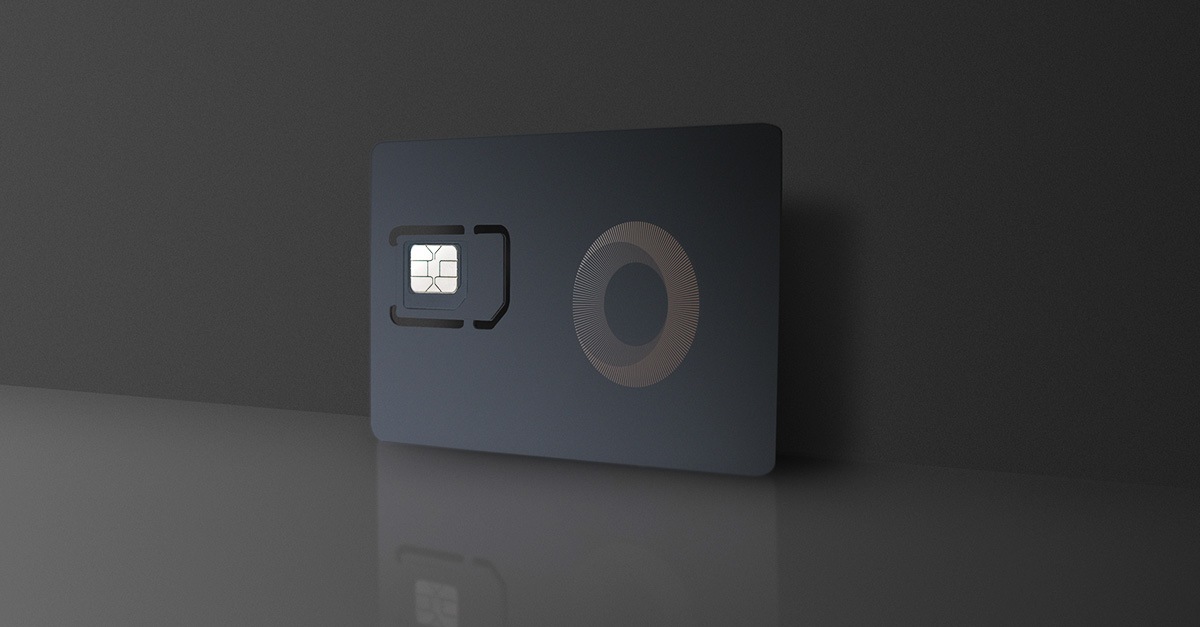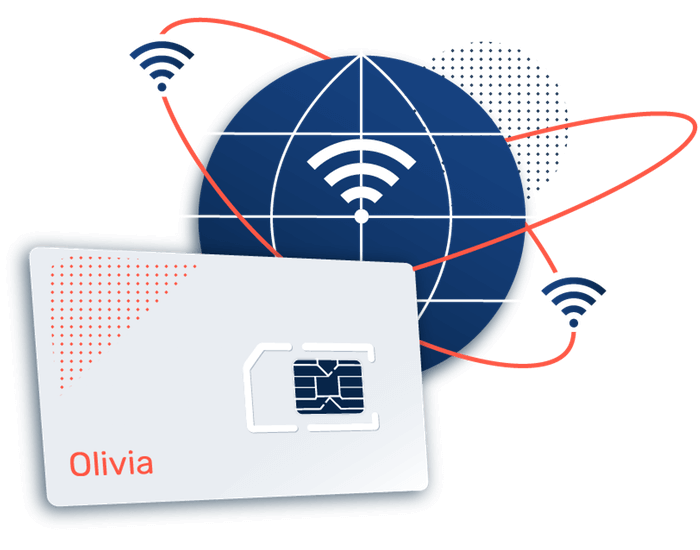Iot Sim copyright IoT SIM
Iot Sim copyright IoT SIM
Blog Article
Iot Device With Sim Card The best IoT SIM Cards
In the rapidly evolving landscape of the Internet of Things, connectivity is crucial for the seamless functioning of units and systems. Two principal technologies have emerged as key opponents: Wi-Fi and Low Power Wide Area Networks (LPWAN). Each has its personal strengths and weaknesses, making them suitable for different applications.
Wi-Fi is understood for its high-speed information transfer and widespread availability, making it a preferred selection for many smart gadgets. Its excessive bandwidth allows for the transmission of enormous quantities of data rapidly, perfect for purposes that require excessive information throughput. This can be notably helpful in environments like smart properties, where multiple gadgets could also be streaming video or exchanging large knowledge information simultaneously.
Iot Sim Card Pricing Smart Connectivity IoT Services
However, the reliance on more power-consuming hardware could be a downside. Wi-Fi devices typically require a continuing power supply, which limits their use in functions where devices need to operate for prolonged durations with out frequent recharging or battery alternative. Smart sensors and units utilized in agricultural fields or rural environments often encounter such limitations - Iot Sim Card South Africa.
LPWAN, on the other hand, offers a distinctive benefit in power consumption. Designed for low-power operations, LPWAN technologies enable devices to transmit data over long distances on little or no energy. This attribute makes LPWAN a beautiful choice for IoT use instances involving sensors that have to function in remote locations for extended durations.
The vary of LPWAN is one other compelling characteristic, as it can cover several kilometers, even in rural settings. In distinction, Wi-Fi tends to have a restricted vary, usually encompassing several hundred meters. This is particularly relevant in functions involving smart agriculture, the place sensors monitoring soil circumstances or crop health could also be distributed over vast expanses of land.
While Wi-Fi is much less complicated to deploy, especially in urban areas, the infrastructure required for LPWAN could involve extra complexity. Companies might have to determine base stations or companion with network providers to make sure coverage. This could deter some companies from pursuing LPWAN, despite its advantages in vary and energy effectivity.
Iot Gsm Sim Card International IoT M2M SIM Card

Security is one other important factor to contemplate. Wi-Fi networks usually make use of sturdy safety protocols, however they can additionally be more weak to cyber threats in comparison with LPWAN protocols, which are typically less frequent and due to this fact much less targeted. This can current a double-edged sword; while LPWAN could also be much less vulnerable to assaults as a outcome of its decrease visibility, its security mechanisms won't be as subtle.
Data latency can be a noteworthy consideration. Wi-Fi typically presents decrease latency in comparability with LPWAN, making it more appropriate for real-time functions the place quick knowledge retrieval is crucial, similar to video streaming or online gaming. For IoT applications that may tolerate longer knowledge transmission times, corresponding to environmental monitoring or utility meter readings, LPWAN can be satisfactory.
Scalability is an important facet of commercial IoT. Wi-Fi networks can turn out to be congested as more devices are added, resulting in decreased efficiency. LPWAN, then again, is specifically designed to accommodate a lot of units over huge areas without substantial performance degradation. This makes it an acceptable choice for smart city functions, the place 1000's of sensors and units should operate concurrently.
Sim Card For Iot IoT SIM cards
The cost issue can even play a significant role in figuring out the best choice for IoT connectivity. Wi-Fi installations can often be cost-effective in smaller setups, however expenses can rise significantly with bigger deployments as a end result of need for additional entry factors and infrastructure. Conversely, LPWAN's low working costs and long battery life could translate to vital savings in intensive deployments.
Operational requirements vary for both my response technologies. Wi-Fi requires a extra secure and dependable power supply, making it much less appropriate for mobile IoT purposes. LPWAN, with its energy-efficient design, can support gadgets a fantastic read in motion, such as asset trackers in logistics or fleet administration - 4g Iot Sim Card. This characteristic extends its applicability to scenarios where units have to transmit data while on the move.
Telkomsel Iot Sim Card IoT and M2M SIM Cards

When addressing the precise use cases for IoT, it becomes clear that every know-how has its personal perfect applications. Wi-Fi is especially efficient in environments where high-throughput and quick response are crucial. Settings similar to smart homes, business buildings, and concrete centers frequently require the high-speed capabilities that Wi-Fi offers.
LPWAN excels in eventualities involving distant monitoring and low-frequency information transmission. Use cases like agricultural monitoring, wildlife tracking, and smart metering are particularly suited to the strengths of LPWAN know-how. Its capacity to extend battery life in low-power gadgets makes it an excellent candidate for these purposes, where constant energy sources are not available.
Ultimately, the selection between Wi-Fi and LPWAN for IoT connectivity will depend upon particular project requirements. Evaluating elements such as power consumption, range, data transmission wants, safety, and scalability might be important in making an informed decision.
As IoT continues to mature, hybrid solutions would possibly emerge that search to combine the strengths of each technologies. For occasion, a wise metropolis might deploy LPWAN for low-power sensors monitoring environmental circumstances, while utilizing Wi-Fi for high-bandwidth functions like surveillance cameras. Such integrations might result in more resilient and adaptable networks that cater to diverse necessities.
Iot Sim Card Guide IoT SIM
The growth of IoT functions necessitates ongoing evaluation of connectivity options. With advances in each Wi-Fi and LPWAN technologies probably on the horizon, staying informed about their capabilities and limitations is key to maximizing their potential in real-world applications. As industries continue to innovate, the dialogue between these two technologies will probably form the longer term connectivity landscape.
In conclusion, while Wi-Fi and LPWAN every maintain unique benefits for IoT connectivity, the decision should be knowledgeable by practical considerations and specific utility needs. The ability to adapt and select the best technology could considerably enhance the efficacy and effectivity of IoT solutions in myriad sectors.

- Wi-Fi offers higher information switch speeds, making it suitable for applications requiring real-time data streaming, like video surveillance.
- LPWAN expertise focuses on long-range communication, enabling devices to attach over kilometers whereas consuming minimal power.
- Wi-Fi networks can expertise congestion, particularly in densely populated areas, potentially resulting in interruptions in connectivity.
- LPWAN is designed specifically for low-power devices, permitting them to function for years on a single battery, best for remote sensor functions.
- Wi-Fi sometimes requires more frequent maintenance and safety updates, while LPWAN networks usually have decrease management overhead once established.
- Scalability is a big advantage of LPWAN, as it can simply accommodate hundreds of devices in a single community without important degradation in performance.
- Devices on Wi-Fi normally require a steady energy source, which limits their deployment in distant or hard-to-reach locations, while LPWAN options can perform successfully in such environments.
- Wi-Fi supports larger frequency bands, which may result in higher interference however gives it higher efficiency in short-range applications.
- The price of deploying LPWAN can be decrease by method of infrastructure, particularly for large-scale IoT networks, as fewer base stations are needed for protection.
- Wi-Fi standards are constantly evolving, providing new features, but this could sometimes result in compatibility issues with legacy gadgets, in contrast to the extra steady LPWAN protocols.undefinedWhat is the main distinction between Wi-Fi and LPWAN for IoT connectivity?undefinedWi-Fi is a high-bandwidth, short-range connectivity choice ideal for big amounts of knowledge, whereas LPWAN (Low Power Wide Area Network) is designed for low-bandwidth, long-range communication, making it appropriate for remote IoT devices needing minimal knowledge transmission.
Iot Sim Card Europe Single-Core Global eUICC IoT SIM
Which expertise is better for battery life in IoT devices, Wi-Fi or LPWAN?undefinedLPWAN usually consumes much less power, enabling battery-operated units to perform for years, whereas Wi-Fi gadgets tend to empty batteries quicker as a result of their greater energy requirements.
Can I use Wi-Fi for large-scale IoT deployments?undefinedWi-Fi can be utilized for large-scale deployments, but it might face challenges like congestion and vary limitations. LPWAN, on the other hand, is designed for large-scale protection and higher scalability in IoT functions.
Global Iot Sim Card IoT Data SIM Card 12 Months
What kinds of use circumstances are best suited to LPWAN?undefinedLPWAN works nicely for applications that require broad coverage and low knowledge rates, such as smart agriculture, asset tracking, and environmental monitoring, the place gadgets could also be deployed in distant areas.
Is Wi-Fi enough for urban IoT applications?undefinedWhile Wi-Fi can serve city IoT wants, issues like interference and limited range might come up. LPWAN offers a extra dependable resolution for urban applications needing in depth protection usually beyond a single Wi-Fi network vary.
How does information switch pace compare between Wi-Fi and LPWAN?undefinedWi-Fi sometimes presents high-speed information transfer rates suitable for functions needing quick data exchange. LPWAN provides decrease speeds but compensates with higher protection and higher battery life for low-data-use circumstances.
Are there safety concerns associated with Wi-Fi and LPWAN?undefinedBoth technologies have security considerations, but Wi-Fi is commonly deemed more weak to unauthorized access. LPWAN incorporates numerous encryption standards, offering security measures tailor-made for IoT deployments.
Iot Sim Card India What Is An IoT SIM Card?
Can LPWAN support real-time communication needs?undefinedLPWAN is not designed for real-time functions because of its lower data transfer rates and latency. Wi-Fi is more suitable for purposes requiring instant data exchange, such as video streaming or live monitoring.
What impact do environmental factors have on Wi-Fi and LPWAN?undefinedEnvironmental factors such as walls and interference can significantly affect Wi-Fi performance, limiting its range. LPWAN is designed to perform well over longer distances and through numerous obstacles, making it more resilient in numerous environments.
Report this page